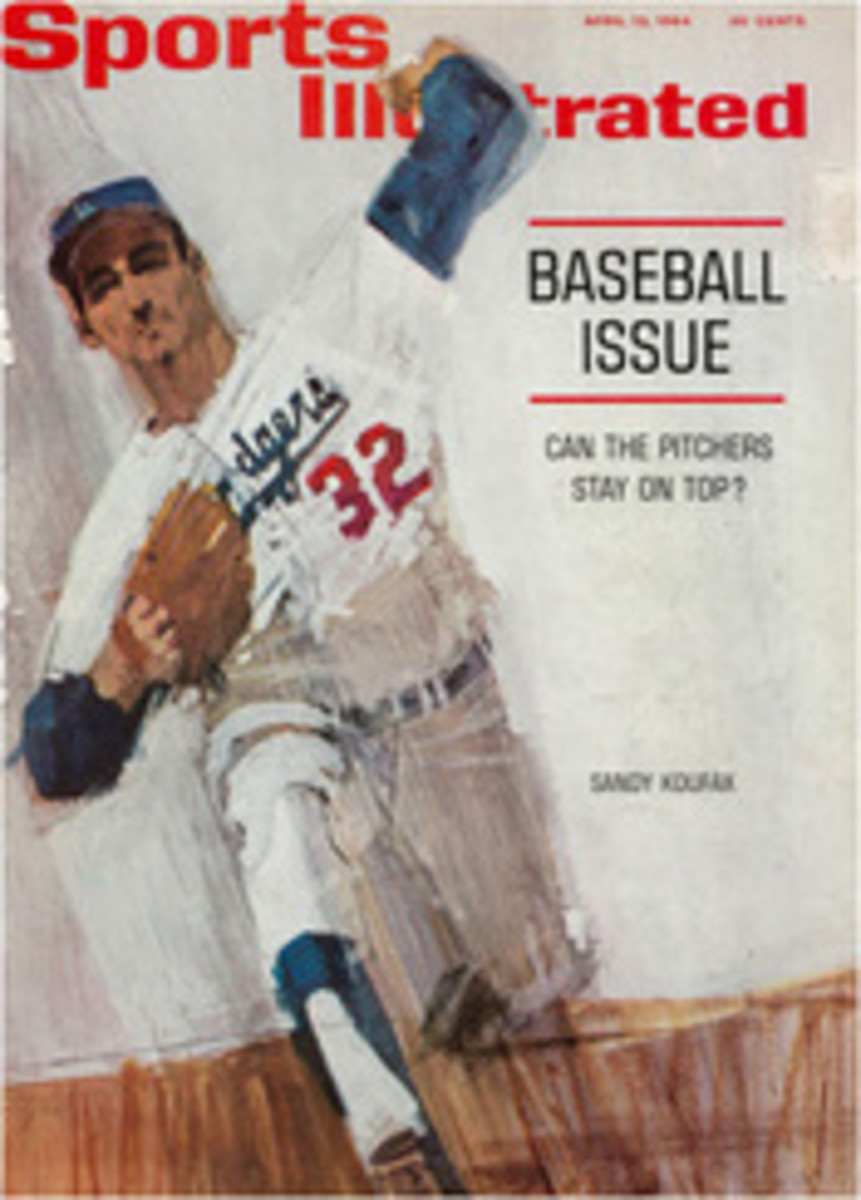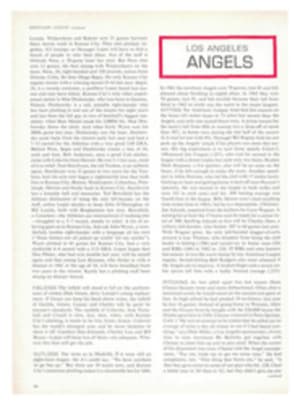
MILWAUKEE BRAVES
In 1963 the Braves fell from the first division for the first time since they moved to Milwaukee, but that may be deceptive. They were third with only 17 games left in the season.
HITTING
Second only to the Giants in power, the Braves upgraded themselves by trading for two of San Francisco's home run hitters, Felipe Alou and Ed Bailey.
They gave up a lot of pitching to make the deal, but Alou, the handsome Dominican, can make the Braves a contender. He faded a bit last year, mostly because he hit so poorly in Candlestick Park, but it was only a year ago that Giant Manager Alvin Dark called him "the second-best outfielder in the league. After you get past Mays, he's as good as anybody." This winter the Giants thought another Alou, brother Jesus, would be even better than Felipe, so they took the Braves' trade offer. Playing together on the same Dominican team when the trade was announced, Right Fielder Felipe and Center Fielder Jesus just switched positions—Felipe knew that when he moved to Milwaukee he moved to center. The Braves have not had a good center fielder since they traded Billy Bruton three years ago. Alou originally was a center fielder, but he had to move to right when he got on Mays's team. He has played right so long now he actually prefers it, but no matter—so does Henry Aaron. Alou, Aaron, and a left fielder, too! The Braves had been running through left fielders like crazy, when all of a sudden a perennial hopeful, Lee Maye, became an overnight sensation last June. Coach Dixie Walker told Maye just to let his bat lie on his shoulder while waiting for the pitch, and he immediately began to connect. He hit .292 from then on and, coincidence or not, the Braves' late collapse came when Maye was hurt and out of the lineup. These three give the Braves not only a power-hitting outfield (75 HRs, 44 by Aaron) but a fast one. They stole 56 bases in only 65 attempts last year (Aaron had 31 out of 36), and Alou and Maye particularly can be counted on for more running this season. Milwaukee has five more players who hit home runs in double figures last year: Bailey, Eddie Mathews, Gene Oliver, Dennis Menke and Joe Torre. Mathews hit only 23, and there was much public agitation about his having a bad year. The fact is that he was on base only 10 times less than Aaron, and Aaron was the best offensive player in the majors. Torre is only 23 years old and is the best-hitting catcher in the league (.293,14 HRs, 71 RBIs). Menke now appears more capable of hitting to all fields, and a higher average may win him a starting spot. But the biggest boost should come from Alou, who has always hit well in County Stadium.
PITCHING
Warren Spahn returns to lead the staff that led the league in complete games because Spahn led the staff. He just passed the $1 million mark in baseball salary and, as has become customary, in the weeks and months ahead he will be passing such people as Christy Mathewson and Eddie Plank and Grover Alexander in various alltime categories. Hedging against old age, Spahn is now developing a curve ball, an interesting diversion for a man who will be 43 in two weeks. The rest of the staff can be characterized as promising anonymities, but the Braves are sure that enough of them are ready. Best of the bunch so far has been left-hander Denny Lemaster (11-14, 3.04). He set a Milwaukee strikeout record last year, although he does not throw as fast as two other young pitchers—Tony Cloninger (9-11, 3.79) and Hank Fischer (4-3, 4.99). A fourth, Bob Sadowski (5-7, 2.62), features a slider over the fast stuff. All need better changeups and improved control. Knuckleballer Bob Tiefenauer, 34, was rescued from the minors on August 11 and took over the Braves' bullpen. Coach Walker figured out that Tiefenauer's knuckler could be controlled only when he was too tired to be sharp, so the Braves keep him pitching—and exhausted—all the time. Frank Funk and Jack Smith, drafted from the Dodgers, back up Tiefenauer for short relief, along with rookie Knuckleballer Phil Niekro. Billy Hoeft, coming back from a serious shoulder separation, is fighting for a spot-start chance along with a six-figure bonus boy, Dan Schneider. The ominous truth in a nutshell: Fischer was the only pitcher on the whole 1963 staff with a better-than-.500 record—except, of course, Spahn.
FIELDING
Versatile, and also just plain good and steady, the Braves led the league last year. There are no weak spots. Torre is the key to the flexibility; he can catch and play first, both equally well. Oliver will be at first when Torre is behind the plate; against some right-handed pitchers, Manager Bobby Bragan will move Torre to first and use left-handed-hitting Catcher Bailey. Menke can play five positions and is a threat to almost every starter. Shortstop Roy McMillan and Second Baseman Frank Boiling are a bit slower now, but still form a line double-play team. Mathews is back home at third after casual experiments in left field. Strong-armed rookie Woody Woodward and Mike de la Hoz provide late-inning infield defense, and Ty Cline and rookie Rico Carty make adequate outfield replacements.
OUTLOOK
Unless all the kid pitchers flop, the Braves could move back into the first division, and, incidentally, bring a few of those old fans back to County Stadium.
PHOTO
TWO OF THE BEST OLD BRAVES, EDDIE MATHEWS AND HENRY AARON, FLANK THE BEST NEW ONE, FELIPE ALOU.

